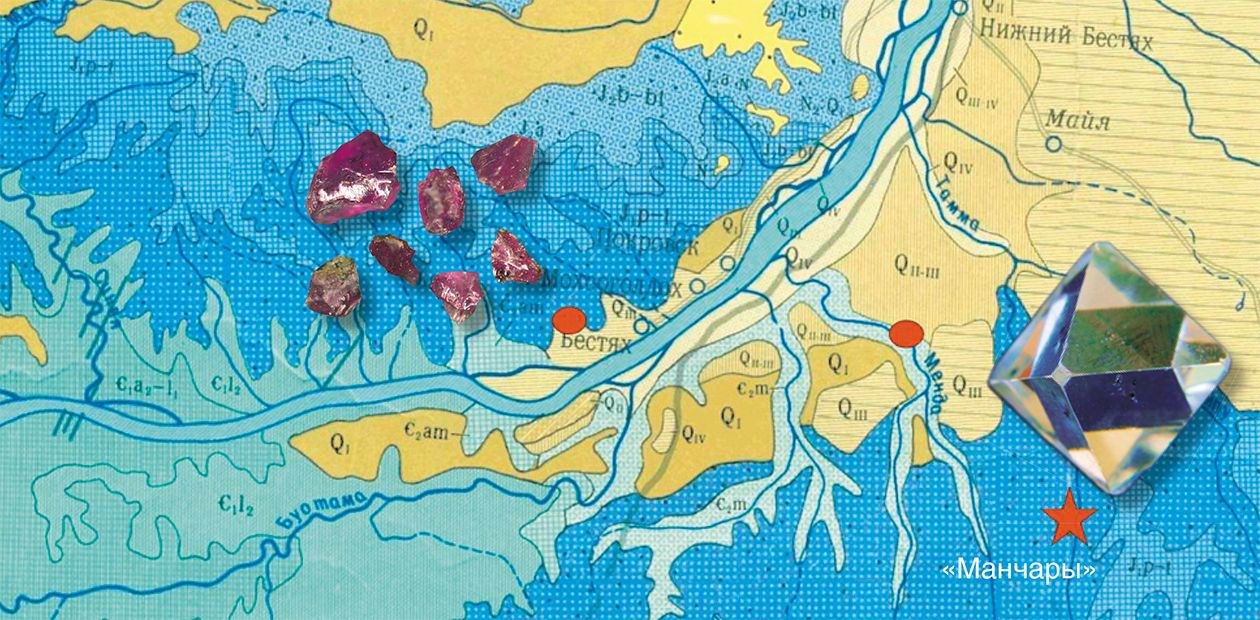More Kimberlites in Yakutia
The latest findings of kimberlites made by geologists significantly extended the limits of the Yakutian Kimberlite Province, which includes, among others, the famous diamond pipe Mir
Whether the discovery is accidental or predetermined and who has made it are the questions that always arise when a deposit or a regularity in the development of the Earth’s crust is found. It is impossible to give a definite answer, since such a discovery is always a result of the long-standing labor of a group of people. Everything is of importance: the level of knowledge, skills in using specific methods of forecast, and finally, mere intuition…
In the middle of the 20th century, theoretical studies in petrology and mineralogy of the deposits of kimberlite-type diamonds in Russia were carried out by the school of thought led by Academician V. S. Sobolev. They resulted in the discovery of large deposits, both primary (kimberlite pipes) and secondary (associated placers). Many towns and settlements grew around those deposits in West Yakutia—Mirnyi, Aikhal, Udachnyi…
These studies are continued today within the framework of scientific programs under the general name “Geological and Physicochemical Factors of the Formation of Large and Unique Deposits of Diamonds, Precious and Rare Metals in Siberia, Forecast of New Types of Minerals”.
The story of the discovery of the kimberlite pipe Manchary, named after the Yakutian “Robin Hood” of the 19th century, began more than 25 years ago. In the early 1980s, geologists of the Diamond and Precious Metal Geology Institute SB RAS were making a tectonic-magmatic map and found out that there were geophysical anomalies of pipe type in Central Yakutia (supposedly, kimberlites).
In the 2000s, scientists and industrial geologists joined their efforts to study recent fluvial deposits near these anomalies and found there Cr-pyropes—an associate mineral of kimberlites and diamonds. In 2007 and 2008, following the scientists’ recommendations, the geologists of Yakutskgeologiya discovered a new kimberlite pipe.
The Manchary pipe is a funnel about 200 m across in the upper part. It is overlaid with more than 100-meter thick Jurassic deposits, which indicates that the pipe is older than 195 million years. To this day it was drilled to a depth of 150–170 m.
The pipe is composed of greenish-gray breccia, the rock containing cemented clastics. The breccia has a massive cement texture with tiny inclusions of glimmerites, micaceous and garnet serpentinites. Grains of olivine and phlogopite, minerals typical of kimberlites, are distinguishable. Chemical analysis of the rocks as well as petrographic and mineralogical data confirms the kimberlite nature of the breccia composing the pipe.
The geologic setting, geographical location and size of the Manchary pipe is of interest not only to science. In the context of diamond extraction, emphasis should be placed on the rare grains of pyropes with a predominance of mantle-derived garnets containing up to 11.5 % Cr2O3. However, it is still impossible to make a definite conclusion on the diamond potential of the Manchary pipe; the more so that within the known diamond-mining areas diamonds are only found in a very low number of the explored pipes.
For geologists the discovery of a new kimberlite pipe in Central Yakutia is of fundamental importance, especially in view of recent finds of pyropes and Cr-spinellides in the rocks on the rivers Kenkeme and Chakyia in the immediate vicinity of Yakutsk. The chemical composition of these minerals implies that the Manchary pipe could not have been their source. We can thus suppose that other kimberlite pipes exist near Yakutsk.
Along with numerous magnetic anomalies in Central Yakutia, these discoveries suggest that a yet unknown kimberlite field exists there. And the kimberlite findings that have been made move the boundaries of the Yakutian kimberlite province more than 800 km southwestward from the Mir pipe.






